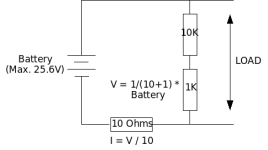Swordman
100 mW
- Joined
- Jan 9, 2007
- Messages
- 40
I've been thinking of building a homemade DrainBrain. But, I really didn't see the point until now as the DrainBrain is a good product and the only thing, other than learning, would be to save a few bucks. So, I've thought about what I could add to a device of this type, and I think the answer is simplification.
Let me give you an example. They produced at one time a 280ZX with digital gauges. I sat in this car once, and it was atrocious. Imagine 7 segment amber displays everywhere in your vision. While it was a cool light show, it was very distracting and not all that intuitive.
I apply this same example to the current digital meters out there (the DrainBrain and the Watts Up). They give you a lot of information in a compact LCD display. While this is fine for the gearheads and designers out there, a simpler top level display is needed.
Here's the type of information I see I need:
- Show me how long I can use the motor before I have to turn around and go home (a fuel gauge).
- Show me how hard I'm using the motor (instantaneous amp usage).
- Tell me how long I've used the motor (elapsed motor usage time).
- Warn me when I've exceeded some set limits (low battery voltage cutoff, time to turn around and go home)
Attached is an example picture of what I'm talking about. What do you guys think?
Let me give you an example. They produced at one time a 280ZX with digital gauges. I sat in this car once, and it was atrocious. Imagine 7 segment amber displays everywhere in your vision. While it was a cool light show, it was very distracting and not all that intuitive.
I apply this same example to the current digital meters out there (the DrainBrain and the Watts Up). They give you a lot of information in a compact LCD display. While this is fine for the gearheads and designers out there, a simpler top level display is needed.
Here's the type of information I see I need:
- Show me how long I can use the motor before I have to turn around and go home (a fuel gauge).
- Show me how hard I'm using the motor (instantaneous amp usage).
- Tell me how long I've used the motor (elapsed motor usage time).
- Warn me when I've exceeded some set limits (low battery voltage cutoff, time to turn around and go home)
Attached is an example picture of what I'm talking about. What do you guys think?



